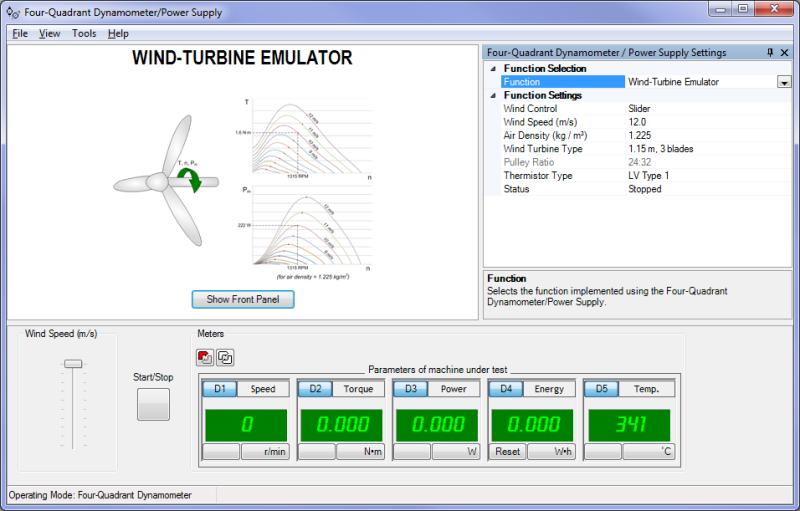Turbine/Engine Emulator Function Set
8968-3Gallery
Description
The Turbine/Engine Emulator Function Set is a package of control functions that can be activated in the Four-Quadrant Dynamometer/Power Supply, enabling the module to emulate the operation of various types of turbines and engines.
The control functions in the set are only available in computer-based mode. This means that the function performed by the Four-Quadrant Dynamometer/Power Supply is selected, set, and monitored using the LVDAC-EMS software. The following control functions are available in the set:
Dynamometer operating mode
- Small Wind-Turbine Emulator: this function makes the permanent-magnet dc motor of the Four-Quadrant Dynamometer/Power Supply faithfully reproduce the effect of wind on the bladed rotor of a small-scale wind turbine. The torque-speed characteristic at the shaft of the machine coupled to the Four-Quadrant Dynamometer/Power Supply is the same as the one that is obtained when wind blows at a certain speed on the rotor of the actual wind turbine. The user has control over the wind speed and air density.
- Hydraulic Turbine Emulator: this function uses the permanent-magnet dc motor of the Four-Quadrant Dynamometer/Power Supply to recreate the behavior of an hydraulic turbine with a synchronous generator. The torque-speed characteristics at the shaft of the machine coupled to the Four-Quadrant Dynamometer/Power Supply is the same as that of a Francis-type hydraulic turbine. The user has control over the vane angle (manually or through the module analog input), the vane variation speed, and the inertia.
- Engine Emulator: this function uses the permanent-magnet dc motor of the Four-Quadrant Dynamometer/Power Supply to recreate the behavior of a diesel engine with a synchronous generator. The torque-speed characteristics at the shaft of the machine coupled to the Four-Quadrant Dynamometer/Power Supply is the same as a diesel generator. The user has control over the fuel rack position (%) (manually or through the module analog input) and the inertia.


